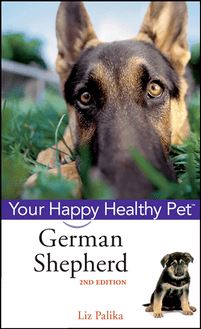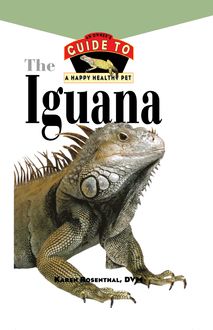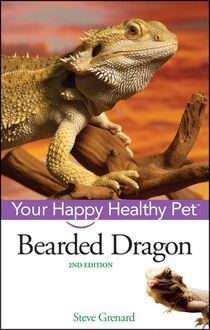The Zebra Finch , livre ebook
73
pages
English
Ebooks
2008
Vous pourrez modifier la taille du texte de cet ouvrage
Obtenez un accès à la bibliothèque pour le consulter en ligne En savoir plus
Découvre YouScribe en t'inscrivant gratuitement
Découvre YouScribe en t'inscrivant gratuitement
73
pages
English
Ebooks
2008
Vous pourrez modifier la taille du texte de cet ouvrage
Obtenez un accès à la bibliothèque pour le consulter en ligne En savoir plus
Publié par
Date de parution
05 mai 2008
Nombre de lectures
2
EAN13
9780470366905
Langue
English
Poids de l'ouvrage
2 Mo
A Resource section provides information on birds clubs, books and magazines and useful Internet sites.
Publié par
Date de parution
05 mai 2008
Nombre de lectures
2
EAN13
9780470366905
Langue
English
Poids de l'ouvrage
2 Mo
The
Zebra Finch
Howell Book House
Howell Book House A Simon Schuster Macmillan Company 1633 Broadway New York, NY 10019
Copyright © 1997 by Howell Book House All rights reserved. No part of this book may be reproduced or transmitted in any form or by any means, electronic or mechanical, including photocopying, recording, or by any information storage and retrieval system, without permission in writing from the Publisher.
MACMILLAN is a registered trademark of Macmillan, Inc.
Library of Congress Cataloging-in-Publication Data Vriends, Matthew M., 1937 The zebra finch: an owner’s guide to a happy, healthy pet/ Matthew Vriends. p. cm Includes bibliographical references.
ISBN: 0-87605-525-0
1. Zebra Finch I. Title. SF473.Z42V75 1997- 636.6’862—dc21 97-22053 CIP
Manufactured in the United States of America 10 9 8 7 6 5 4
Series Director: Ariel Cannon Series Assistant Director: Jennifer Liberts Book Design: Michele Laseau Cover Design: Iris Jeromnimon Illustration: Laura Robbins Photography:
Cover by B. Everett Webb Back cover and inset by Eric IIansenko Joan Balsarini: 82 Michael DeFraitas: 5, 12, 16, 17, 27, 30, 37, 53, 66, 75 Eric IIansenko: 2–3, 19, 24, 26, 39, 42, 46, 57, 58, 63, 78–79, 105, 107, 113 Matthew Vriends: 6, 8, 14, 15, 25, 54, 61, 72, 80, 89, 92, 98, 100, 106, 113, 114, 116, 117, 119, 120 B. Everett Webb: 7, 22-23, 40, 50, 65, 109, 112, 115, 116, 118, 122
Production Team: Robyn Burnett, Kathleen Caulfield, and David Faust
Contents
part one
Welcome to the World of the Zebra Finch
1 What Is a Zebra Finch?
2 Zebra Finches in the Wild
part two
Living with a Zebra Finch
3 The Zebra Finch in Captivity
4 Bringing Your Zebra Finch Home
5 Feeding Your Zebra Finch
6 Your Zebra Finch’s Health
part three
Enjoying Your Zebra Finch
7 Breeding Zebra Finches
8 Fun with Your Zebra Finch
9 Other Compatible Finches
part four
Beyond the Basics
10 Resources
11 Recommended Reading
part one
External Features of the Zebra Finch
chapter 1
What Is a Zebra Finch?
Zebra Finches belong to the subfamily Estrildinae of the family Estrildidae. Scientifically, the Zebra Finch is most widely recognized as Poephila guttata castanotis or Poephila guttata. Poephila is derived from the Greek poe = grass, and philos = to love, meaning “fond of grass” (which refers both to their method of nest construction and to grass seeds, which constitute a major part of their diet in the wild). The word guttata is derived from the Latin gutta, meaning spot or drop; guttata thus means: “spotted,” referring to the drop-like markings on the flanks. Castanotis is derived from the Greek castanon = chestnut, and the Greek otos, genitive of ous = ear, and means (more or less) “with a chestnut colored ear.”
The subfamily Estrildinae is contained within the suborder of songbirds ( Oscines), a branch of the extensive order of perching birds ( Passeriformes). Australian Grass Finches, Waxbills, Mannikins, Munias and related species in the Estrildinae family were once all known as weaver finches, as they had many points in common with the true weavers (family Ploceidae). However, research into these matters has shown that the estrildid finches, including Zebra Finches, Gouldian Finches and similar species, possess several traits that are quite different to those of the weavers. These include such things as the anatomical structure of body organs (the syrinx, or voice box, for example) and behavior (particularly with regard to reproductive behavior). Reclassification has also been influenced by differences in general anatomy, feather structure and ecological considerations.
Zebra Finches use grass for nest contruction and eat the seeds .
Zebra Finches versus Weaver Finches
So why aren’t Zebra Finches true weavers? In the true weavers ( Ploceidae), the males begin nest construction by first weaving a few grass blades or stems around a twig before forming a ring-shaped construction which serves as the main framework of the nest. The roof is started next, followed by the rest of the outside. Lastly, attention is given to the lining of the nest. The males build several nests before they start courting the hens with song. The impressed hen will then choose what she thinks is the most appropriate nest in which to rear a family.
The estrildines, including Zebra Finches and other Australian, Asian and African finches, take a completely different approach to nest construction. They build the base first, usually a saucer- or bowl-shaped construction in the fork of a tree or among the dense foliage of a shrub. The side and the roof are added later, but there is never any true weaving as demonstrated by the weavers. It is thus better to include the estrildines among the grass and parrot finches ( Erythrurini ).
This Red Bishop is a true weaver; these finches are different anatomically, behaviorally and ecologically from estrildines, like the Zebra Finch family .
Zebra Finch Subspecies?
New species or subspecies are regularly being named, either as new species are discovered or as species are reclassified. Of course this causes continual changing of the scientific names which can be confusing if you do not keep up to date.
The Zebra Finch occurs throughout the continent of Australia and many ornithologists have recognized distinctive color variants from area to area. They designated these color variants subspecies within the species, and older literature may recognize up to seven of these false species. It is now generally recognized that all these varieties are in fact taxonomically identical though there are some obvious color differences. An Australian ornithologist, Dr. J.A. Keast, proved beyond doubt there are no subspecies of the Zebra Finch in Australia, however unlikely this may seem in such a large territory. One possible explanation for this unlikely act is that frequent droughts on the continent, especially in central Australia, force birds to migrate in search of water; causing a regular mixing of different bird populations, leading to a standardization of type.
Different markings do not necessarily mean different species. Here a male and female display different coloring .
Most modern bird books now list the classification of the Australian Zebra Finch as Poephila guttata. Within this single species there is a wide variety of markings, beak color and size.
There is an officially recognized subspecies that lives on some of the Indonesian Lesser Sunda Islands, including Timor and Flores, Letti, Sermatta, Luang and the Moa Islands. The color of this subspecies is brownish-yellow, and the top and sides of the head are darker than in the Australian race. The females of the Timor subspecies also have a darker breast and back.
It is interesting to note that the French ornithologist, Vieillot, who quite probably had Zebra Finches in his own aviaries, described the only recognized subspecies of Zebra Finch (the Indonesian race) rather than the Australian form; he made a mistake however, as he states that he was describing the Australian bird!
Description of the Zebra Finch
The male or cock is mainly softly grayish (gray-blue head and neck, gray-brown back), with a conspicuous orange or chestnut cheek patch, bordered below the eye with a narrow, black vertical line (“tear”). A further narrow black line edges the base of the beak, and the area between the two black lines is white. The wings are dark gray-brown. The throat and upper part of the breast are marked with horizontal dark gray, wavy lines that are bordered below with a wider breast band that runs across the width of the chest. The lower underside is beige-white, the flanks orange-red with round white spots. The tail is black with white diagonal bands. The rump and the under tail coverts are white. The beak is coral-red, the eyes red, the feet orange-brown.
WHAT’S IN A NAME
English name: Zebra Finch
Scientific names: Poephila guttata castanotis, Poephila guttata, Taeniopygia guttata
Other English names: Chestnut Finch, Chestnut-eared Finch, and Spotted-sided Finch
French name: Diamant Mandarin
German name: Zebra Fink
Dutch name: Zebravink
The signature chestnut cheek patch is evident on this pied mate Zebra Finch .
The female, or hen, is gray above with a light gray (sometimes almost white) ear spot. The area between the black tear-line and the narrow black line round the base of the beak is white, as in the cock. The throat, neck, chest and sides are gray; the underside white-beige. The tail is similar to that of the cock, as are the white rump and under tail coverts. The beak is a much lighter red color than that of the cock; the eyes are red, the feet orange-yellow.
The attentive Zebra Finch observer will notice that there are some variations of the above descriptions among domestic stock. For example, domesticated birds have dark brown, rather than red eyes. The gray in the cock of domesticated gray Zebras (called “normals” by breeders) is more brownish. The underside of the wild hen is frequently much paler than that of the domesticated counterpart and the same can be said about the cheeks. Domesticated birds are also usually longer and more robust than wild specimens.
Notice the differences between the male and female Zebra Finch. (The female is on the right .)
The young or hatchlings already bear a resemblance to adult hens; only the black lines around the cheeks and beak are missing, and this area is colored gray rather than white. Hatchlings have pink (flesh-colored) skin, with or without sparse white down; the beak is horn-colored. In 3 weeks the skin gradually darkens, and a week later is almost black. In about 12 days the beak is quite black. The primaries appear after 7 days, the tail feathers on the tenth day and small contour feathers on the eleventh to twelfth days. The veins on the primaries can be seen at this time.
The size of the Zebra Finch’s body is approximately 4–4.3 inch














